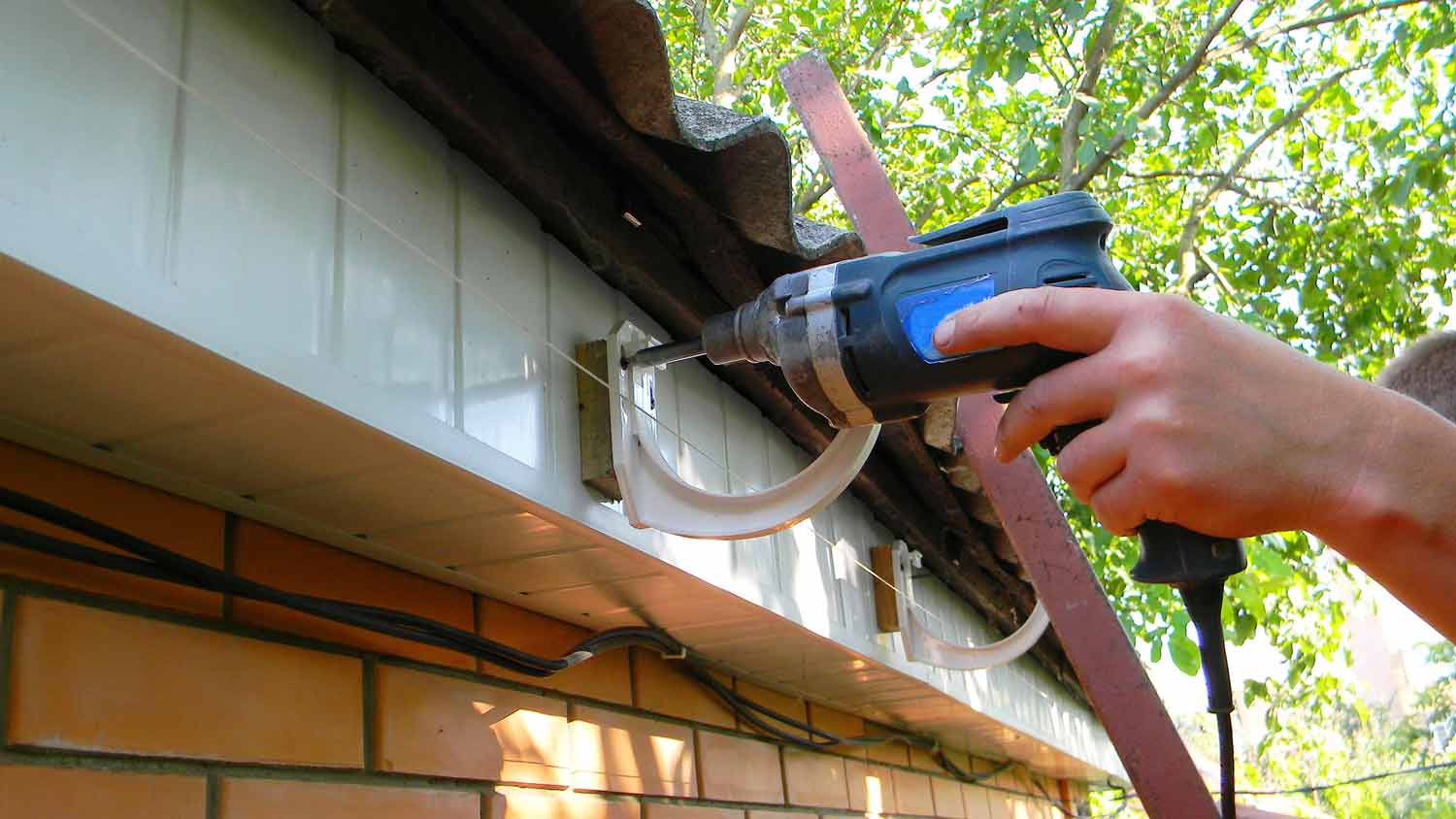
Are gutter guards worth it? The average gutter guard installation cost is $650 to $2,000 but varies depending on types, materials, home height, and other factors.
Don’t take this the wrong way, but your gutter hangers need some space


Gutter hanger spacing may seem like the least of your concerns when planning a new gutter installation, but there’s no discounting its importance. Hangers keep gutters fixed to your roof, but they also provide a great deal of support to your entire system—which they can’t properly give when spread out too far apart or placed too close together. So what amount is just right for keeping your gutters intact come rain or snow? These tips will help you find that sweet spot.
Cleaning gutters almost always requires using a ladder, which can be dangerous. If you plan to clean or work on your home’s gutters, ensure someone is available to hold the ladder steady or hire a gutter professional to avoid leaving the ground entirely.

No matter the type of gutter you’re dealing with, the maximum recommended distance between gutter hangers is three feet. Any more than that will put the structural integrity of your gutter system in jeopardy. Larger distances create more room for sagging and collapse, and can lead to costly repairs in both the short and long term.
On the flip side, it is fine to scale down the distance between gutters—but not by a ton. Two feet of space between hangers will give the whole setup extra strength, which can be a boon in places that see heavy rain and snowfall. But any less—like one to 1.5 feet of distance—is redundant. Such a small distance won’t make your system more secure, but it will mean you need to purchase more hangers.
Always make sure there’s a hanger at the center of the gutter, as this spot is most vulnerable and, when unguarded, can bring your system crashing down—heavy rain or not.
Your particular weather conditions are the single biggest determiner of gutter hanger spacing. Gutters are at a larger risk of damage and failure in extreme climates, where heavy snow and rain rule the day. If this is your situation, err on the side of caution and place your gutter hangers only two feet apart. This will help the system carry the extra weight it’s bound to encounter.
By contrast, gutter hangers can safely be placed at a maximum three-foot distance in temperate climates that experience mild and infrequent rain and little to no snow.
Once you’ve figured out the best gutter hanger spacing for your system, whip out the measuring tape and mark all the designated spots. Now is not the time to eyeball it. You want to be as specific as possible to avoid premature damage.
When determining where to place gutter hangers, always start four inches from the gutter end on both sides. Like the center of a gutter, the edges are also vulnerable, especially since they connect to the downspouts. These add extra weight and make sagging more likely without proper reinforcements.

Once you know where your hangers need to go, drill all the holes at once. That way, you won’t have to measure between setting up each hanger—and, more importantly, you can gather all the tools you need for installation rather than climbing up and down the ladder over and over again. If you’re not so keen on working up high in the first place, find out who does gutter work, and don’t hesitate to hire a gutter installation pro near you instead.
Need to see it to believe your gutter hangers are properly spaced? Give your gutter system a quick test run once installation is over. Grab a long garden hose and a buddy to help control it from the ground, then place it into your gutter and gradually adjust the speed and intensity of the flow. This will give you a look at how your gutters will handle real-deal rain before the time comes. Water not flowing as seamlessly as you’d like, despite the hangers all being in the right place? You may need to adjust your gutter slope.
Gutter repairs are a routine part of maintaining a home. Although gutters can last 20 years or more with proper upkeep, they often need repairs during that time. Based on responses from 7,200 Angi customers, the most common problem, reported by 26% of homeowners, is sagging or loose gutters, which can sometimes result from improper hanger spacing. Correct hanger spacing helps gutters stay securely in place and maintain the correct slope, which allows water to flow smoothly toward the downspouts instead of pooling or overflowing.
From average costs to expert advice, get all the answers you need to get your job done.

Are gutter guards worth it? The average gutter guard installation cost is $650 to $2,000 but varies depending on types, materials, home height, and other factors.

Gutter repair costs may not be as high as you think—but it depends on the type of damage you're addressing. Learn why you need to hire a gutter pro for this work.

Installing copper gutters adds beauty and value to your home. The cost of your project will depend on the size of your home, the size of your gutters, and the thickness of the material.

Seamless gutters are a durable and low-maintenance solution for handling water drainage. Use this guide to learn all about whether seamless gutters are right for your home.

Gutter slopes ensure proper drainage and avoid water damage. But how much slope does a gutter need? Here's what you need to know for your home.

Learn about the pros and cons of vinyl versus aluminum gutters to make the right choice for your home’s needs, budget, and long-term value.